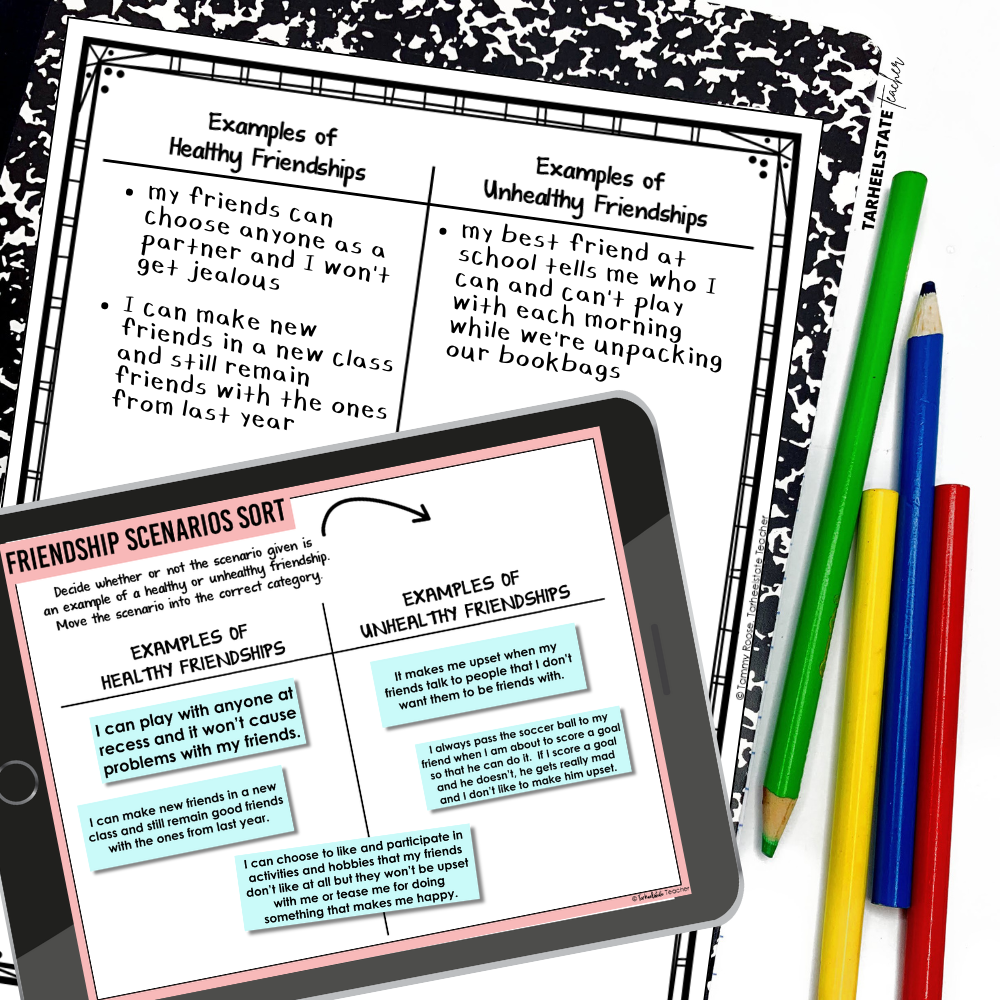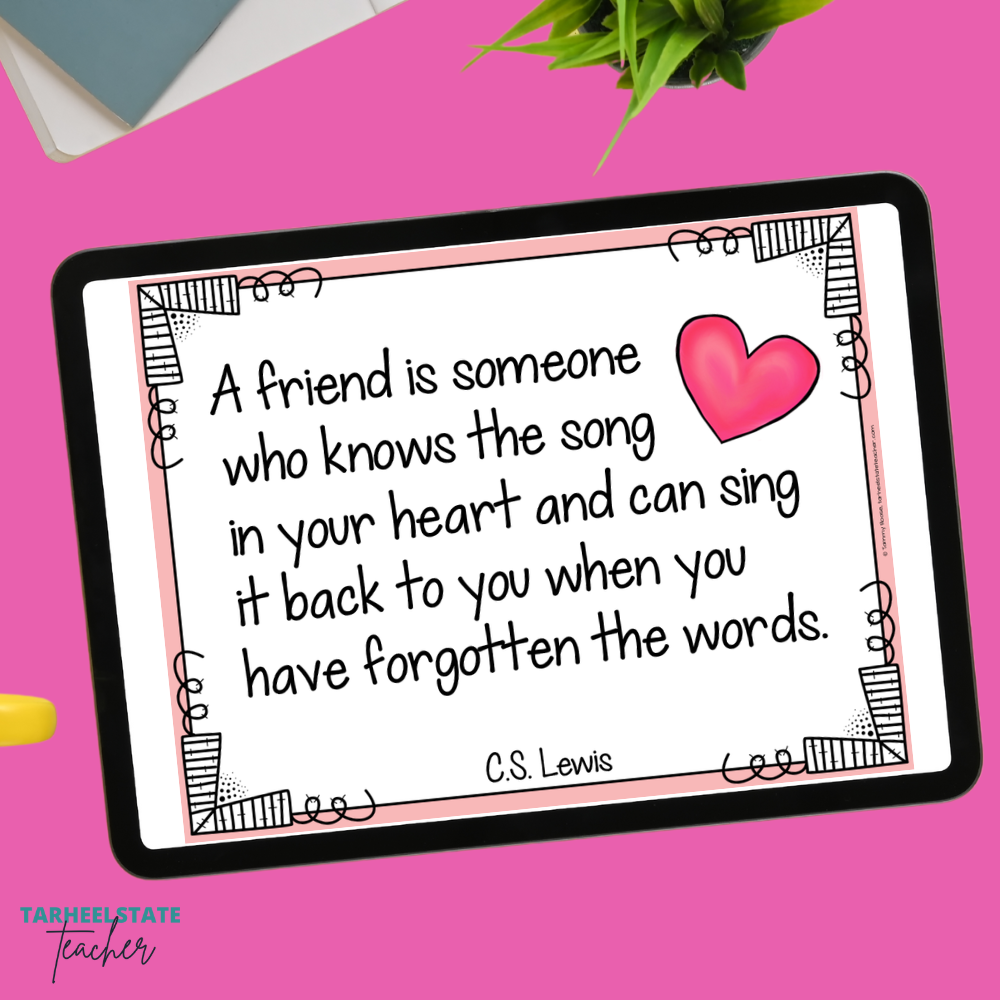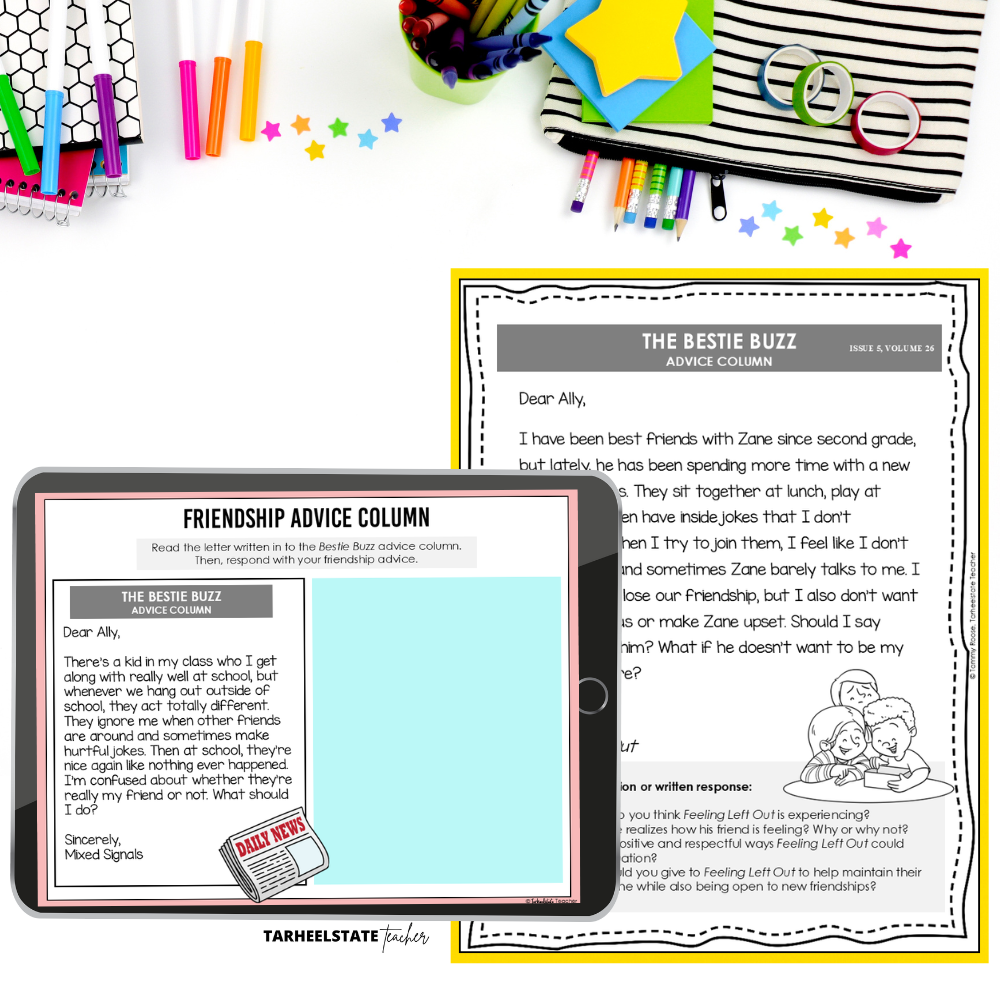Healthy Friendships vs Unhealthy: Helping Students Recognize the Difference
Friendships play a big role in the emotional and social development of upper elementary students. While kids this age are forming stronger peer bonds, they’re also starting to face more complex social challenges—like exclusion, peer pressure, or one-sided relationships. That’s why it's essential to help them recognize the difference between healthy friendships vs unhealthy ones.
When students understand what a healthy friendship looks and feels like, they’re more likely to build positive relationships, set boundaries, and stand up for themselves and others.
WHAT IS A HEALTHY FRIENDSHIP?
A healthy friendship is built on mutual respect, trust, kindness, and support. In a healthy friendship:
Both friends feel safe being themselves
Communication goes both ways—each person listens and speaks up
Mistakes are acknowledged and forgiven
Boundaries are respected
Time spent together feels uplifting and fun
On the other hand, unhealthy friendships may involve:
One person always being in control
Frequent teasing, excluding, or manipulating
Feeling anxious, left out, or hurt often
A lack of empathy or fairness
Disrespecting boundaries or personal space
By learning to identify these patterns early, students become more confident in choosing friendships that make them feel seen, valued, and supported.
TEACHING STUDENTS TO SPOT THE DIFFERENCE
Here are some strategies for helping your students understand the contrast between healthy friendships vs unhealthy ones:
1) CREATE A FRIENDSHIP T-CHART
Draw a T-chart labeled “Healthy” and “Unhealthy.” Have students brainstorm behaviors, words, and feelings that fit into each category. This is a great anchor activity to revisit throughout the year.
2) USE FRIENDSHIP SCENARIOS TO SPARK DISCUSSION
Present real-life friendship situations (like someone pressuring a friend to keep secrets or someone celebrating their friend’s success). Ask: “Is this a healthy or unhealthy friendship? Why?” This encourages critical thinking and empathy.
🌟In my Friendship SEL Unit, I challenge students to discuss relatable friendship scenarios and sort them into two categories, healthy friendships and unhealthy friendships.
3) REFLECT ON PERSONAL EXPERIENCES
Invite students to journal or talk about times when they felt good in a friendship—and times they didn’t. This helps them connect the abstract idea of what is a healthy friendship to their real lives.
🌟In my Friendship SEL Unit, I love to use friendship quotes for students to reflect on and journal about to help them personally connect to the big idea of friendship.
4) IDENTIFY WARNING SIGNS IN FRIENDSHIPS
Help students build awareness of healthy friendships vs unhealthy ones by teaching them to spot "red flags" and "green flags."
🌟During my Friendship SEL Unit, I show students the video, 6 Signs You’re in a Toxic Friend Group, and then have them complete a journal activity where they code examples of positive and problematic friendship behaviors.
5) TEACH ASSERTIVENESS SKILLS
Sometimes kids don’t realize they can speak up when a friendship doesn’t feel right. Help them practice assertive phrases like, “I don’t like when you do that,” or “I need some space today.”
🌟So many students struggle to communicate their needs clearly without sounding aggressive or shutting down completely. Teaching assertiveness gives them the tools to protect their boundaries while still being kind. I dive deeper into why this matters (and how to teach it!) in this post: Teaching Assertiveness Skills to Upper Elementary Students: Why It Matters and How to Do It
6) REINFORCE POSITIVE PEER QUALITIES
Celebrate kindness, inclusivity, and support in your classroom. Point out examples of healthy friendships in action when you see them.
🌟 A great way to deepen this learning is through activities that help students reflect on what they value in a friend—and then turn the lens inward. If we want healthy friendships, we also have to do the work to be a good friend ourselves. One activity I love in my Friendship SEL Unit encourages students to identify the traits they admire in others and assess how well they show those same traits in their own friendships.
7) OFFER ADVICE FROM A FRIEND’S PERSPECTIVE
Support students in thinking critically about what is a healthy friendship by letting them practice giving advice to others navigating friendship challenges.
🌟During my Friendship SEL Unit, I show students a sample “Dear Ally” letter about a tough friendship situation. Then, students share their ideas as a class and pretend they are journalists responding to readers who have written in for friendship advice.
Why it matters
Understanding what is a healthy friendship doesn’t just help students feel better socially—it supports their academic success and emotional well-being too. When students feel secure in their relationships, they’re more likely to participate, take risks, and show up as their best selves.
By giving kids the language, tools, and confidence to recognize the differences between healthy friendships vs unhealthy, we’re not just helping them navigate playground drama—we’re equipping them for lifelong relationship skills.
NEED MORE FRIENDSHIP ACTIVITIES AND DONE-FOR-YOU RESOURCES FOR TEACHING FRIENDSHIP?
You can manage to do each of these activities with a reflection journal and materials you have around the classroom, but if you want some of the work done for you, you can check out my Friendship theme SEL unit. I use this unit for a 2-3 week morning meeting unit. It includes student journal pages, detailed and editable friendship lesson plans, bulletin board materials with friendship vocabulary and related friendship quotations, and Google Slides for the teacher and a digital student notebook.
This Friendship theme SEL unit is also included in the SEL Morning Meeting MEGA Bundle that contains 16 social- emotional learning themes. If you’re looking to increase your social-emotional learning focus, you’ve come to the right place!
SEL THEMES TO GUIDE YOUR MORNING MEETINGS ALL YEAR
With units focused on gratitude, empathy and compassion, growth mindset, conflict resolution and compromise, grit and perseverance, responsibility, understanding and managing emotions, and so much more, your engaging SEL or morning meeting plans are done for you and your students will love them!
If you purchase the bundle from my personal website store, you can save an additional 20% on the SEL Mega Bundle of all 16 topics with the code SEL20.








